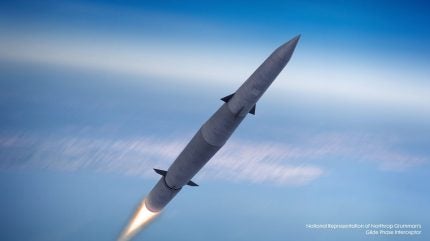
Japan is collaborating with the United States to develop hypersonic interceptor technology to counter aerial threats.
This joint venture comes as Japan faces increased military pressure from North Korea’s nuclear advancements and China’s assertive posture over the contested Senkaku Islands.
In August 2023, the US and Japan announced a joint effort to combat the rising threat of hypersonic missiles in the Indo-Pacific region, unveiling the Glide Phase Interceptor (GPI) as part of their collaboration.
The Japanese government has allocated $1bn (Y157bn) to develop the Glide Phase Interceptor (GPI), a project that underlines the nation’s emphasis on enhancing its missile defence capabilities. According to GlobalData, a prominent data and analytics firm, this initiative is part of a broader plan to see Japan spending approximately $8.9bn on missile procurement over the next decade.
The GPI, designed to intercept high-speed missiles during their glide phase, represents a leap in defensive technology.
Vinayak R Kamath, Aerospace and Defense Analyst at GlobalData, highlighted the long-standing defence partnership between Japan and the US. “Japan has relied on its long-term partner, the US, for various defence equipment,” Kamath noted. “Japan will continue to engage with the country in the near future to jointly develop next-generation weapons such as the GPI.”

US Tariffs are shifting - will you react or anticipate?
Don’t let policy changes catch you off guard. Stay proactive with real-time data and expert analysis.
By GlobalDataThe implications of this development are profound. For Japan, it means staying ahead in the regional arms race, particularly in the face of North Korea’s growing missile capabilities and China’s military assertiveness. For the US, it ensures a fortified ally in a critical region, capable of countering Chinese influence and safeguarding mutual interests.
In April 2024, China’s Ministry of National Defense spokesperson, Senior Colonel Wu Qian, urged Japan to abandon its militarisation efforts, criticising Japan’s portrayal of China as its greatest strategic challenge in the 2024 Diplomatic Bluebook.
In addition to the GPI, Japan’s missile defence strategy includes procuring a range of interceptor missiles from the US, such as the AIM-120C-7, RIM-161D SM-3 Block-2, RIM-66 Standard, RIM-116 RAM Block 2, and RIM-174 Standard ERAM. These acquisitions are set to enhance Japan’s ability to neutralise aerial threats, from ballistic missiles to air-breathing targets.
This defence spending and development programme signals Japan’s proactive stance in securing its airspace and maritime domains.
The joint GPI project reinforces Japan’s defence posture and strengthens the US-Japan alliance, presenting a united front against common threats. In an era where hypersonic weapons are rapidly becoming a game-changer, this collaboration marks a step towards ensuring peace and stability in East Asia.



